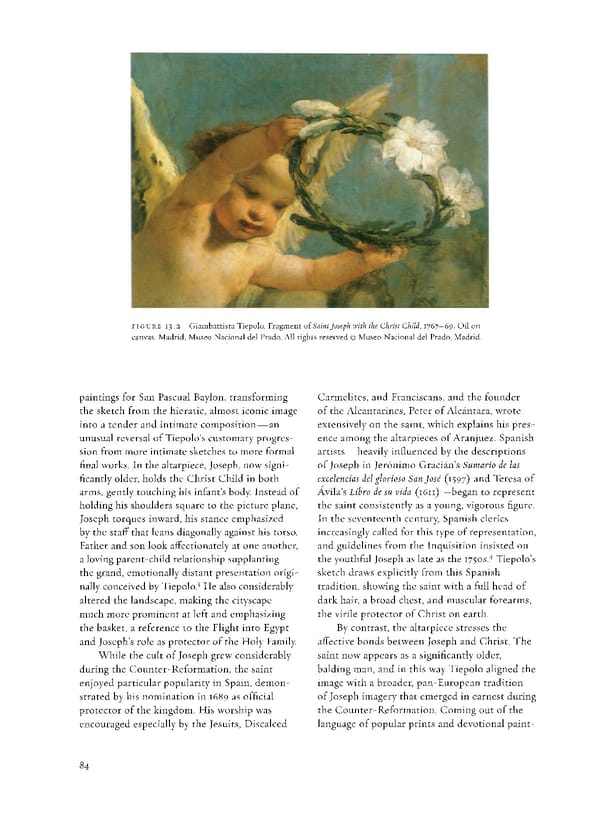FIGURE 13.2 Giambattista Tiepolo. Fragment of Saint Joseph with the Christ Child, 1767-69. Oil on canvas. Madrid, Museo National del Prado. All rights reserved © Museo Nacional del Prado, Madrid. paintings for San Pascual Baylon, transforming Carmelites, and Franciscans, and the founder the sketch from the hieratic, almost iconic image of the Alcantarines, Peter of Alcantara, wrote into a tender and intimate composition—an extensively on the saint, which explains his pres- unusual reversal of Tiepolo's customary progres- ence among the altarpieces of Aranjuez. Spanish sion from more intimate sketches to more formal artists—heavily influenced by the descriptions final works. In the altarpiece, Joseph, now signi- of Joseph in Jeronimo Gracian's Sumario de las ficantly older, holds the Christ Child in both excelencias del glorioso San Jose (1597) and Teresa of arms, gently touching his infant's body. Instead of Avila's Libro de su vida (1611)—began to represent holding his shoulders square to the picture plane, the saint consistently as a young, vigorous figure. Joseph torques inward, his stance emphasized In the seventeenth century, Spanish clerics by the staff that leans diagonally against his torso. increasingly called for this type of representation, Father and son look affectionately at one another, and guidelines from the Inquisition insisted on 4 a loving parent-child relationship supplanting the youthful Joseph as late as the 1750s. Tiepolo's the grand, emotionally distant presentation origi- sketch draws explicitly from this Spanish 3 tradition, showing the saint with a full head of nally conceived by Tiepolo. He also considerably altered the landscape, making the cityscape dark hair, a broad chest, and muscular forearms, much more prominent at left and emphasizing the virile protector of Christ on earth. the basket, a reference to the Flight into Egypt By contrast, the altarpiece stresses the and Joseph's role as protector of the Holy Family. affective bonds between Joseph and Christ. The While the cult of Joseph grew considerably saint now appears as a significantly older, during the Counter-Reformation, the saint balding man, and in this way Tiepolo aligned the enjoyed particular popularity in Spain, demon- image with a broader, pan-European tradition strated by his nomination in 1689 as official of Joseph imagery that emerged in earnest during protector of the kingdom. His worship was the Counter-Reformation. Coming out of the encouraged especially by the Jesuits, Discalced language of popular prints and devotional paint- 84
 Giambattista Tiepolo: Fifteen Oil Sketches Page 84 Page 86
Giambattista Tiepolo: Fifteen Oil Sketches Page 84 Page 86